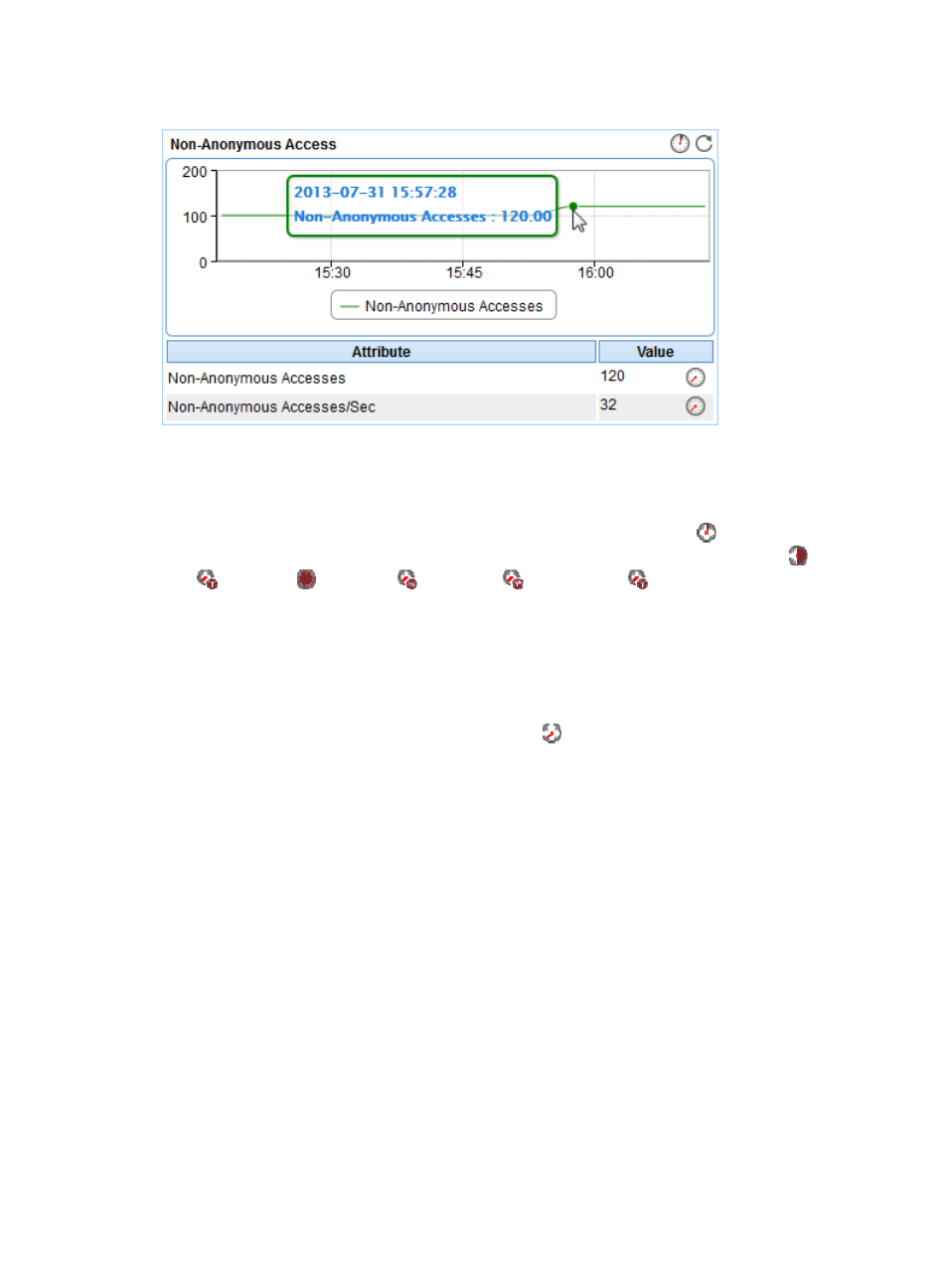Adding a php application monitor – H3C Technologies H3C Intelligent Management Center User Manual
Page 419

405
Figure 337 Non-Anonymous Access area layout
Non-Anonymous Access area fields:
•
Non-Anonymous Access trend graph—Shows changes of the non-anonymous accesses over the
last 1 hour in a graph. Point to a spot on the curve to view the non-anonymous accesses at the
specific time point. To change the report period, click the Last 1 Hour icon
on the upper right of
the graph, and then select an icon from the list. Available options include Last 6 Hours
, Today
, Yesterday
, This Week
, This Month
, and This Year
.
•
Attribute/Value—Monitor index name and data.
{
Non-Anonymous Accesses—Number of users accessing the IIS server by using non-anonymous
connections when APM last polled the IIS server.
{
Non-Anonymous Accesses/Sec—Number of users accessing the IIS server by using
non-anonymous connections per second when APM last polled the IIS server.
{
History Record—Click the History Record icon
to view the trend statistics of the history
non-anonymous accesses in a line graph. Operators can view non-anonymous accesses
statistics over the last 1 hour, last 6 hours, today, yesterday, this week, this month, and this year
by clicking the corresponding icons on the upper right of the graph.
PHP
Hypertext Preprocessor (PHP) is a scripting language embedded in the HTML text, and is usually used to
develop Web programs. When a user accesses Web pages developed by using the PHP language, the
Web server first delivers the Web pages with the PHP language embedded to the PHP service for parsing,
and then sends the parsed pages to the user. APM can monitor the PHP service, which is responsible for
parsing pages.
This section describes how to add/modify a PHP application monitor and the details of PHP application
monitor reports.
Adding a PHP application monitor
APM monitors whether PHP is running properly through the Web service port (TCP 80 by default). APM
requests for PHP pages from the Web server as a client, and determines whether the PHP service can
